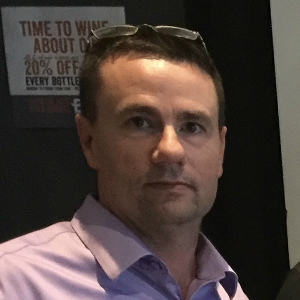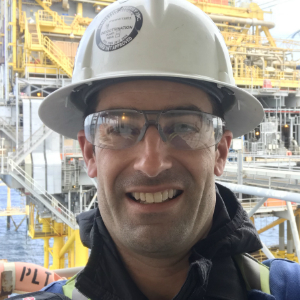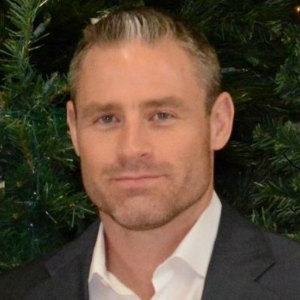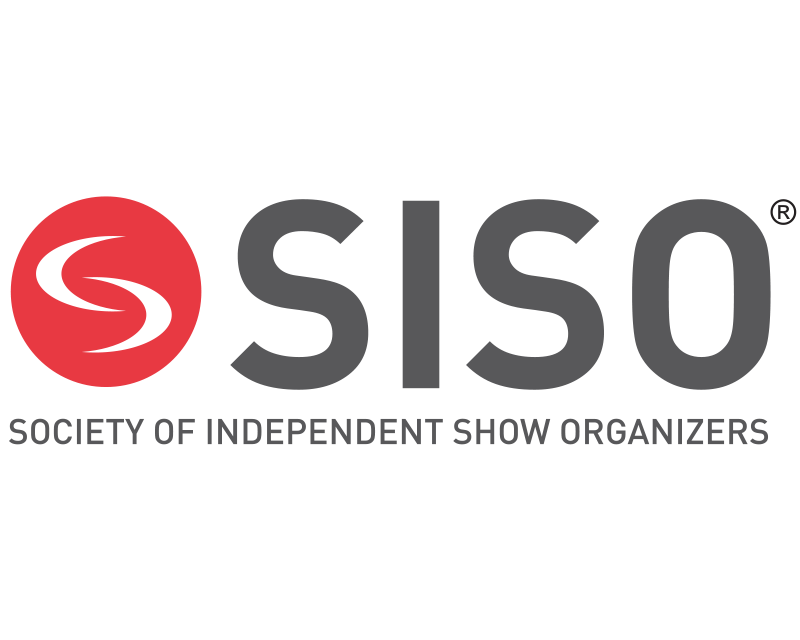- 7 30 AM
- 8 00 AM
Opening Keynote - Disruptive Times: Making Your Own Path
The only thing constant is change – and yet we usually find change very difficult; especially when it is thrust upon us from the outside. The automation business has seen significant changes, and t...
 8:00 AM - 9:00 AM
8:00 AM - 9:00 AM
Opening Keynote - Disruptive Times: Making Your Own Path
 8:00 AM - 9:00 AM
8:00 AM - 9:00 AM
The only thing constant is change – and yet we usually find change very difficult; especially when it is thrust upon us from the outside. The automation business has seen significant changes, and these changes are ever growing in scope and complexity. How do we keep up and prosper? Going through a change can be like going through the 5 stages of grief. But we can own it, and we can make that process better, easier, hopeful. It’s something I’ve been doing my whole career, and I’m happy to share some of those experiences with you; some ideas that can help you in your endeavors.

- 9 10 AM
Applying the Industrial Internet of Things (IIoT); It’s Easier Than You Think!
This session will explore the IIoT solutions. By focusing on the problem and not the technology, it is easier to achieve improved safety, compliance, control and monitoring. By increasing connectiv...
 9:10 AM - 9:55 AM
9:10 AM - 9:55 AM
Applying the Industrial Internet of Things (IIoT); It’s Easier Than You Think!
 9:10 AM - 9:55 AM
9:10 AM - 9:55 AM
This session will explore the IIoT solutions. By focusing on the problem and not the technology, it is easier to achieve improved safety, compliance, control and monitoring. By increasing connectivity, strategic interpretation of pervasive sensing drives actionable information. Wireless connectivity is one such means of gathering that information to make informed decision on applications from stream traps, pumps, heat exchangers to cooling towers, pressure relief devices and safety showers. An intuitive consistent user experience accessing this data through dashboards or other informative interfaces delivers actionable information to personnel to enable faster decision making. All signals don’t have to go through a DCS or PLC to achieve that outcome. Integration of such pervasive sensing has become a reality and not a trend if we think of such uses in our homes, cars, retails or industrial plant sites. Becoming more predictive and proactive with this approach has resulted in increased production, reduced process incidents, improved reliability, and reduced emissions at large industrial sites.

- 9 10 AM
Open Process Automation Standard Version 1, Overview and Impacts
The initial set of open standards that make up the Open Process Automation Standard (O-PAS) have been published. Major automation vendors are now building their initial prototypes for open interope...
 9:10 AM - 9:55 AM
9:10 AM - 9:55 AM
Open Process Automation Standard Version 1, Overview and Impacts
 9:10 AM - 9:55 AM
9:10 AM - 9:55 AM
The initial set of open standards that make up the Open Process Automation Standard (O-PAS) have been published. Major automation vendors are now building their initial prototypes for open interoperability testing and trials in 2019.

- 9 10 AM
The Top 20 Cyber Attacks on Industrial Control Systems
This presentation reviews the top twenty cyberattack classes for industrial control systems and evaluates three different security postures against these attacks: a first-generation IT-inspired ICS...
 9:10 AM - 9:55 AM
9:10 AM - 9:55 AM
The Top 20 Cyber Attacks on Industrial Control Systems
 9:10 AM - 9:55 AM
9:10 AM - 9:55 AM
This presentation reviews the top twenty cyberattack classes for industrial control systems and evaluates three different security postures against these attacks: a first-generation IT-inspired ICS security program from best-practice guidance circa 2003-2013, an upgrade to that program to accommodate an Industrial Internet of Things deployment, and an updated design reflecting modern, best-practice ICS security advice.
Business decision makers are often reluctant to allocate funds to defend against low-frequency high-impact (LFHI) attacks on the basis of subjective, qualitative risk assessments or hypothetical probabilities. A spectrum of attacks is shown to be a useful tool for explaining the consequences and benefits of existing vs proposed security postures. A spectrum of specific attacks suggests a specific answer to the question “what is the simplest attack with serious consequences that our current security posture does not defeat reliably?”

- 9 55 AM
- 10 15 AM
Building the Entrepreneurial Mindset
Regardless of the venture, there are several key skills and attitudes that distinguish a successful entrepreneur from others. In this workshop, you will learn from an experienced entrepreneur that...
 10:15 AM - 11:55 AM
10:15 AM - 11:55 AM
Building the Entrepreneurial Mindset
 10:15 AM - 11:55 AM
10:15 AM - 11:55 AM
Regardless of the venture, there are several key skills and attitudes that distinguish a successful entrepreneur from others. In this workshop, you will learn from an experienced entrepreneur that will teach you valuable lessons through a series of experiences, self-assessments and evaluations. You will learn how to maximize your strengths and mitigate weaknesses to drive entrepreneurial success. These lessons will also grant you an experienced, visceral understanding of the key behaviours and relevant skills needed to be successful as an entrepreneur.

- 10 15 AM
Selecting the Correct Control Valve
A maxim that is evident to most valve subject matter experts (SMEs) is that the application dictates the valve. Remarkably the selection of valves in many applications is less than best practice an...
 10:15 AM - 11:00 AM
10:15 AM - 11:00 AM
Selecting the Correct Control Valve
 10:15 AM - 11:00 AM
10:15 AM - 11:00 AM
A maxim that is evident to most valve subject matter experts (SMEs) is that the application dictates the valve. Remarkably the selection of valves in many applications is less than best practice and process suffers when it shouldn’t. The consequences of poor control valve sizing and selection can not be understated, affecting both commissioning and startup as well as established operations, creating safety and output issues.
Through the work initiated by the Manufacturers Standardization Society (MSS) to define severe service valves (SSVs), a clear indication of severe service thresholds for control valves has been identified. Different sources estimate the number of Severe Service control valves between 3% to 10% of plant’s valve population, it was also estimated that these valves account for 40% of purchasing cost for all control valves on site, yet once supplied and commissioned in many cases these valves need redesign or replacement as a result of incorrect sizing and selection.
Although control valves sizing is performed in accordance with ISA S75.01 sizing equations and IEC 60534-8-3 Noise Prediction Methods, it may be considered compositely; its parts consist of the following:
• Science
• Personal experience
• Personal preference
• Customer history
• Application history
• Cost of ownership
• Application severity
From practical standpoint control valve selection is often based on the least expensive alternative which will meet process control requirements. Over the years control valve manufacturers developed practical guidelines to help interpret process data correctly, and establish severity of 3 major Severe Service conditions – cavitation, flashing and high noise levels; and methods to handle these conditions according to the level of severity in the most cost effective way.
This holistic approach has proven effective across various applications, some of the most challenging processes for control valves in Hydrocarbon Processing and Pulp and Paper industries include Black Liquor flow control, HP Boiler Feed Water, Wash Water, HP Steam, Superheated Steam and Turbine Steam supply, Inlet Separators feed, High Pressure Gas Separator to Gas Flare, which mostly show not one but a combination of Severe Service conditions that were addressed cumulatively in devising a solution that would meet acceptable level of performance

- 10 15 AM
Midstream Middleware – An Evolutionary Journey with MQTT
The presentation will cover the design, implementation and testing of an MQTT middleware communications infrastructure in a large midstream pipeline company (Plains Midstream Canada)
The infrast...
 10:15 AM - 11:00 AM
10:15 AM - 11:00 AM
Midstream Middleware – An Evolutionary Journey with MQTT
 10:15 AM - 11:00 AM
10:15 AM - 11:00 AM
The presentation will cover the design, implementation and testing of an MQTT middleware communications infrastructure in a large midstream pipeline company (Plains Midstream Canada)
The infrastructure removed all requirements for serial communications from the SCADA Master system to the remotes and replaced it with a Publish/Subscribe architecture. This significantly reduced data latency from the field, reduced leak alarm limits thereby improving sensitivity to leaks and freed up bandwidth to enable the reporting of orphaned data from the field to corporate applications.
The presentation takes the listener through the entire 3-year process from pilot to final upgrade in the field identifying the challenges encountered and how many of the original goals were met (10 of 12). Finally, there will be a short discussion on what the next phase will accomplish using smart devices connected to this architecture to deliver on the promise of IIOT.

- 10 15 AM
Secure Communications with EtherNET/IP – CIP Security
CIP Security for EtherNet/IP devices makes use of the IETF-standard TLS (RFC 5246) and DTLS (RFC 6347) protocols in order to provide a secure transport for EtherNet/IP traffic. TLS is used for the...
 10:15 AM - 11:00 AM
10:15 AM - 11:00 AM
Secure Communications with EtherNET/IP – CIP Security
 10:15 AM - 11:00 AM
10:15 AM - 11:00 AM
CIP Security for EtherNet/IP devices makes use of the IETF-standard TLS (RFC 5246) and DTLS (RFC 6347) protocols in order to provide a secure transport for EtherNet/IP traffic. TLS is used for the TCP-based communications (including encapsulation layer, UCMM, transport class 3), and DTLS for the UDP-based transport class 0/1 communications. This approach is analogous to the way that HTTP uses TLS for HTTPS.
The secure EtherNet/IP transport provides the following security attributes:
• Authentication of the endpoints — ensuring that the target and originator are both trusted entities. End point authentication is accomplished using X.509 certificates or pre-shared keys.
• Message integrity and authentication — ensuring that the message was sent by the trusted endpoint and was not modified in transit. Message integrity and authentication is accomplished via TLS message authentication code (HMAC).
• Message encryption — optional capability to encrypt the communications, provided by the encryption algorithm that is negotiated via the TLS handshake

- 11 10 AM
Control Valve Trim with Expanding Right Turn Angles
The general derivation of the loss coefficient (or resistance coefficient) of a control valve trim with multiright angle turns with constant expansion is presented in this article, followed by a hi...
 11:10 AM - 11:55 AM
11:10 AM - 11:55 AM
Control Valve Trim with Expanding Right Turn Angles
 11:10 AM - 11:55 AM
11:10 AM - 11:55 AM
The general derivation of the loss coefficient (or resistance coefficient) of a control valve trim with multiright angle turns with constant expansion is presented in this article, followed by a historical account of the development of other techniques for commercial applications.

- 11 10 AM
DCS Systems Can Bring Cost Savings to Constructing A New Facility. Fact or Fiction?
The upstream oil & gas industry has been using a “3 bid and-a-buy strategy” for each piece of equipment for decades, treating compressors, heaters, VRUs etc. as standalone unit/packages. The issue...
 11:10 AM - 11:55 AM
11:10 AM - 11:55 AM
DCS Systems Can Bring Cost Savings to Constructing A New Facility. Fact or Fiction?
 11:10 AM - 11:55 AM
11:10 AM - 11:55 AM
The upstream oil & gas industry has been using a “3 bid and-a-buy strategy” for each piece of equipment for decades, treating compressors, heaters, VRUs etc. as standalone unit/packages. The issue with this approach is that all these pieces of equipment need to be mechanically and electrically stitched together for operations to run the facilities as one entity. The typical facility designs leave the automation system with many complex hardware components to integrate during the design and construction phases as well as a multitude of different software platform solutions which tend to be subjective depending on the EPC. This leaves end users with many variations of facility standards throughout the organization and difficulty maintaining a standardized design with multiple EPCs and construction contractors.



- 11 10 AM
Secure Operations Technology
IT-SEC teaches us to “protect the information.” The goal of SEC-OT is not to protect the information, but to protect physical industrial operations from the information, more specifically from cybe...
 11:10 AM - 11:55 AM
11:10 AM - 11:55 AM
Secure Operations Technology
 11:10 AM - 11:55 AM
11:10 AM - 11:55 AM
IT-SEC teaches us to “protect the information.” The goal of SEC-OT is not to protect the information, but to protect physical industrial operations from the information, more specifically from cyber attacks that may be embedded in information. After all – all cyber attacks are information. Secure Operations Technology is a perspective, a methodology and a set of best practices documented in this author’s new book. The book describes what thoroughly-secured industrial sites actually do. What they do is different from what most industrial sites do.
For example: most SEC-OT sites define a single control-critical network composed of one or more conventional industrial control system networks. SEC-OT sites carefully inventory all offline and online flows of information into that critical network. Since all attacks are information, a comprehensive inventory of information flows is also a comprehensive inventory of attack vectors. Secure sites then set about systematically blocking or strictly controlling all of these information/attack flows.
This presentation summarizes the SEC-OT methodology and best practices. A limited number of complementary copies of the new book will be available to attendees.

- 11 55 AM
Keynote Luncheon: AI – New Business Imperative
Artificial Intelligence is quickly becoming a new business imperative in Oil and Gas. Business benefits of adopting this technology are significant and it will be difficult to compete without using...
 11:55 AM - 1:15 PM
11:55 AM - 1:15 PM
Keynote Luncheon: AI – New Business Imperative
 11:55 AM - 1:15 PM
11:55 AM - 1:15 PM
Artificial Intelligence is quickly becoming a new business imperative in Oil and Gas. Business benefits of adopting this technology are significant and it will be difficult to compete without using it. This keynote will describe where AI technology is most commonly used, what benefits it delivers and what are the typical challenges awaiting its adopters. I will describe how AI fits in a broader Digital Transformation agenda and explain key AI concepts. I will also provide a few real-life examples of AI technology used in the oil & gas industry, including ones from Oil Sands. Finally, I will comment of where the technology is heading and what to expect in the coming years.

- 1 15 PM
Using Near Infared Spectroscopy to Optimize Hydrocarbon Production Volumes
Measurement is often the critical factor necessary to optimize hydrocarbon processing facilities. While many analyzers are capable of performing the required analysis, the ability to provide online...
 1:15 PM - 2:00 PM
1:15 PM - 2:00 PM
Using Near Infared Spectroscopy to Optimize Hydrocarbon Production Volumes
 1:15 PM - 2:00 PM
1:15 PM - 2:00 PM
Measurement is often the critical factor necessary to optimize hydrocarbon processing facilities. While many analyzers are capable of performing the required analysis, the ability to provide online measurement capabilities in real world applications is often confounded by the need for an elaborate and complex sample conditioning system. Most analytical methods require that the sample properties, such as temperature and pressure be well controlled and that the sample is clean and contaminant free. Spectroscopic solutions often reduce the required complexity of the sample conditioning system and also provide near real-time analysis.
Advances in semiconductor technology and in numerical analysis have enabled the use of near infrared (NIR) spectrometers in such applications. These devices have been applied in upstream, midstream and downstream facilities to provide real-time quantitative analysis of both chemical composition and physical properties. Upstream, the measurement has been taken to the well-head to monitor and optimize hydrocarbon production during enhance oil recovery (EOR) operations. The technology has been applied extensively through out the midstream industry, from optimizing condensate stabilizer performance to LPG production to crude oil blending. Downstream, near infrared spectroscopy is being applied to the production of refined products, such as gasoline, diesel and jet fuel.

- 1 15 PM
Correct Practices in Measurement Improves Efficiencies During Construction and Commissioning
During early design phases of engineering, either in sustaining or significant projects. Many times, we have heard experienced personnel on the project team conversing about, “we should write these...
 1:15 PM - 2:00 PM
1:15 PM - 2:00 PM
Correct Practices in Measurement Improves Efficiencies During Construction and Commissioning
 1:15 PM - 2:00 PM
1:15 PM - 2:00 PM
During early design phases of engineering, either in sustaining or significant projects. Many times, we have heard experienced personnel on the project team conversing about, “we should write these requirements in equipment/instrument package specification…..”, “let construction determine the installation….”, “we don’t know how the cable is installed to this instrument…..”. And many more such instances, where the engineering project team does not realize the potential challenge and transfers the responsibility to others in construction or commissioning. Moreover, by assuming that others will take these simple to complex tasks care during later phases of the project. One always has to remember those construction workforces are doers of what is given to them as construction documentation.
Most of the difficulties coming out during construction and commissioning phases can be removed by implementing best practices during the engineering. So what are these best practices? Are these documented anywhere? Every measurement technology has a unique selection, design, installation, and commissioning
requirement. Also, all instruments are not the same; even the same category of product with different model
numbers is different. Selection and implementation of measurement technology is a multi-discipline and
multi-stakeholder collaboration, where coordination between disciplines at every level of engineering,
procurement, and design results in the best practices.
This paper/presentation addresses some of the best practices based on project experiences to be considered
during the engineering, design and procurement phases from the steps where an application is identified with
the operating and design process conditions to the vendors recommending the best measurement
technology. Such interdependencies, if worked correctly on these pieces of instrument/equipment will reduce
the overall TIC of the application providing capital efficiencies on the project. Doing it right in the first place also improves the schedule by eliminating the rework and thus improving the overall cost benefits for the
projects.

- 1 15 PM
The First Step to Defend Against Cyber Attacks: Effective OT Asset Management
Today’s automation systems are incredibly complex, with thousands of measurements, integrated applications, and more interdependency than ever before. The primary mechanism for continuous improveme...
 1:15 PM - 2:00 PM
1:15 PM - 2:00 PM
The First Step to Defend Against Cyber Attacks: Effective OT Asset Management
 1:15 PM - 2:00 PM
1:15 PM - 2:00 PM
Today’s automation systems are incredibly complex, with thousands of measurements, integrated applications, and more interdependency than ever before. The primary mechanism for continuous improvement to the process and operations within an industrial facility consists of daily configuration changes on a wide range of multi-vendor automation systems. The vast majority of the changes are unmanaged and undocumented, which makes determining what authorized or unauthorized changes occurred almost impossible. This leaves industrial facilities vulnerable to cyberattacks from external threat actors and also vulnerable to the effects of undocumented or unauthorized changes made by insiders.
OT asset management is foundational to an effective OT cybersecurity program. OT asset management includes inventory management, configuration management, vulnerability management, and the detection of unauthorized changes. Effective OT asset management can improve production safety and reliability while reducing OT cyber risk. OT asset management also delivers the depth and breadth of information that cybersecurity professionals, as well as control system engineers, need to secure ICS assets effectively. However, OT asset management in many organizations is characterized by bad data about inventory, configurations, and vulnerabilities; poor change management practices; and misplaced assumptions, such as the notion that acquiring asset inventory or configuration data requires an IP address or device scan.
In this session:
• Review five real-world asset management use cases and their cybersecurity implications
• See how OT asset management can provide deep visibility into the cybersecurity posture of industrial assets – all the way down to the field instrument and control strategy level – without the risk associated with active polling of devices
• Understand how improving OT asset management improves both OT cybersecurity and process reliability
• Identify strategies to improve OT asset management and cybersecurity within your own organization

- 2 10 PM
Rapid Determination of Bitumen Content in Athabasca Oil Sands by Laser-Induced Breakdown Spectroscopy
Evaluation of bitumen content in oil sands feedstock is important to control the extraction process and improve
the recovery efficiency. Current standard techniques for bitumen determination in oi...
 2:10 PM - 2:55 PM
2:10 PM - 2:55 PM
Rapid Determination of Bitumen Content in Athabasca Oil Sands by Laser-Induced Breakdown Spectroscopy
 2:10 PM - 2:55 PM
2:10 PM - 2:55 PM
Evaluation of bitumen content in oil sands feedstock is important to control the extraction process and improve
the recovery efficiency. Current standard techniques for bitumen determination in oil sands ore suffer whether from their timeconsuming labor intensive method of sample preparations or from requiring a high number of samples for calibration purposes.
The analysis of bitumen ore samples is very challenging for the analytical chemist due to its nature of several phases of wet and dry particles and heterogeneous mixture of clay, bitumen, water, and solid contents. In this paper, we present a new enabling method using LIBS to determine rapidly and without sample preparation the bitumen content in oil sands ores. A qualitative study by principal component analysis was first done, and then a partial least-squares method was performed to assess the feasibility of determining bitumen by LIBS. The results show a good correlation between LIBS spectra and bitumen content and a prediction averaged absolute error around 0.7%. This method demonstrates that the LIBS is a promising tool for rapidly assessing oil sands ore grades either in the lab, at-line, or online. Elemental composition of solids is also investigated.

- 2 10 PM
Automating a Vintage Natural Gas Storage Facility with Wireless Technology
Our natural gas storage facility located in Carbon, Alberta, Canada has several manually operated isolation valves that change the flow path of the facility between 4 different modes of operation (...
 2:10 PM - 2:55 PM
2:10 PM - 2:55 PM
Automating a Vintage Natural Gas Storage Facility with Wireless Technology
 2:10 PM - 2:55 PM
2:10 PM - 2:55 PM
Our natural gas storage facility located in Carbon, Alberta, Canada has several manually operated isolation valves that change the flow path of the facility between 4 different modes of operation (Injection, Withdrawal, Compression, and Dew Point Control). For years, these isolation valves have been manually operated and logged by field personnel. The field operators would update a large whiteboard in the control room with dry erase markers to visualize the facility process flow diagram and current mode of operation.
Our project transformed this manual effort into an automated process by leveraging several digital technologies including a wireless gateway, wireless position transmitters, DeltaV Distributed Control System, and Human Centered Design concepts.

- 2 10 PM
Leveraging IT Programs in OT – Establishing an OTSM Program
Everyone struggles with how big of a challenge cybersecurity for OT environments is when you factor in aging operating systems, process fragility, lack of staff/skills/resources and a reluctance to...
 2:10 PM - 2:55 PM
2:10 PM - 2:55 PM
Leveraging IT Programs in OT – Establishing an OTSM Program
 2:10 PM - 2:55 PM
2:10 PM - 2:55 PM
Everyone struggles with how big of a challenge cybersecurity for OT environments is when you factor in aging operating systems, process fragility, lack of staff/skills/resources and a reluctance to ‘violate’ OEM support or warranty agreements. The reality, however, is that we have ‘IT systems’ in our environments so we must adopt ‘IT solutions’ to manage and maintain them.
The concept of IT service management (ITSM) is well established and, according to Wikipedia refers to the entirety of activities – directed by policies, organized and structured in processes and supporting procedures – that are performed by an organization to design, plan, deliver, operate and control information technology (IT) services offered to customers.
Our premise is that we need to establish an OTSM or OT Service Management program to properly provide cybersecurity and system health/reliability functions into the process control environment. This means adopting (safely) IT type of tools, practices (SOC, Cloud, Agents, Automation, etc) into an OT network to produce sustainable, repeatable results and significantly improve cyber security ‘hygiene’ in OT.
This presentation will start with an outline of an OTSM approach to security, then transition to two very different case studies where OTSM helped to first ‘assess and measure’ security risk by performing a technology enabled risk assessment. The second case study illustrates the speed, accuracy and flexibility in maintaining and managing an OT environment gains by deploying an OTSM approach.

- 3 20 PM
Novel Instrumentation for Continuous Measurements of Contaminants in Ethylene for Industrial Process Monitoring and Control
Accurate and reliable measurements of contaminants in Ethylene feedstocks from steam crackers have historically required time-consuming and higher maintenance methods such as ion mobility spectrosc...
 3:20 PM - 4:05 PM
3:20 PM - 4:05 PM
Novel Instrumentation for Continuous Measurements of Contaminants in Ethylene for Industrial Process Monitoring and Control
 3:20 PM - 4:05 PM
3:20 PM - 4:05 PM
Accurate and reliable measurements of contaminants in Ethylene feedstocks from steam crackers have historically required time-consuming and higher maintenance methods such as ion mobility spectroscopy (IMS) or chromatography (GC). A near real-time analysis allows better control of the hydrogenation process to minimize contaminants such as acetylene (C2H2), ammonia (NH3) and water (H2O) that will poison catalysts in further chemical processes. This paper reports on the design, development, and deployment of novel instrumentation, consisting of innovative laser-based gas analyzers for rapid measurements of multiple contaminants with extremely high sensitivity, accuracy and dynamic range. This new instrumentation, based on a Cavity-Enhanced Laser Absorption Spectroscopy technique, can use advanced calibration techniques to directly measure without any scrubber or elution technique. This enables continuous measurements with 1-second time resolution and thus provides a means for process monitoring and control, including tracking upsets far above the typical limits.

- 3 20 PM
The Control Room of the Future – Technology and the Workforce
The rate at which technology is evolving continues to grow at a rapid pace. Whereas in the past technology was developed based on industry requirements and needs to increase efficiency and producti...
 3:20 PM - 4:05 PM
3:20 PM - 4:05 PM
The Control Room of the Future – Technology and the Workforce
 3:20 PM - 4:05 PM
3:20 PM - 4:05 PM
The rate at which technology is evolving continues to grow at a rapid pace. Whereas in the past technology was developed based on industry requirements and needs to increase efficiency and production, this is changing, and industry must now respond to new technologies in order to compete and grow. Recent studies indicate that the use of automation in the workplace will nearly double in the next few years. Industry is now facing not only challenges to keep up with the integration of automation, but also how to transition its workforce. If we look at the control room as being the heart of the industrial environment, the focus in the past has mainly been on the physical and automated components. The challenge in today’s control room environment is not only with the transition to more technologically advanced operations, but also to the need for more technologically advanced operators. Competition for a smaller skilled workforce, with more options for careers that embrace technology will increase exponentially. How will industry attract the operators required to maintain and continue to increase production? Understanding the challenges and being aware of the obstacles will help industry to continue to attract, retain and enable the workforce of the future. There are solutions that are not immediately apparent that can be applied to today’s environment, with the future in mind. This presentation will discuss options for industry to respond to these changing circumstances.

- 3 20 PM
Continuous Threat Detection for Industrial Operations
Continuous Threat Detection (CTD), provides an approach to give industrial sites extreme visibility, continuous threat and vulnerability monitoring, and deep insights into ICS networks. The approac...
 3:20 PM - 4:05 PM
3:20 PM - 4:05 PM
Continuous Threat Detection for Industrial Operations
 3:20 PM - 4:05 PM
3:20 PM - 4:05 PM
Continuous Threat Detection (CTD), provides an approach to give industrial sites extreme visibility, continuous threat and vulnerability monitoring, and deep insights into ICS networks. The approach ensures safe, secure and reliable operations in large, complex industrial networks – ensuring zero impact to the underlying operational processes and improved cyber resiliency.
Companies have to extract precise details about each asset on the industrial network, profile all communications and protocols, generate a fine-grain behavioral baseline that characterizes legitimate traffic, and alerts you to network changes, new vulnerabilities and threats. You need a system that provides the contextual information you need to investigate and respond quickly.
This approach delivers the following key benefits:
• Rapidly detect industrial operations risk, enhance cyber resiliency, and minimize unplanned downtime
• Prevent impact to physical processes, expensive industrial equipment or injuries to people
• Quickly deploy and scale across multiple sites and reduce overall management costs

- 4 15 PM
Natural Gas Chromatography 101 (for Pipelines and Process Facilities
Gas chromatography is used to analyze gas quality and composition for a variety of process applications. Applications include inlet gas, sales gas, processed gas within a facility or energy meterin...
 4:15 PM - 5:00 PM
4:15 PM - 5:00 PM
Natural Gas Chromatography 101 (for Pipelines and Process Facilities
 4:15 PM - 5:00 PM
4:15 PM - 5:00 PM
Gas chromatography is used to analyze gas quality and composition for a variety of process applications. Applications include inlet gas, sales gas, processed gas within a facility or energy metering prior to fired equipment.
This presentation will focus on chromatography theory, a demonstration of natural gas chromatography using a simulator analyzing natural gas (also simulated), and will include a discussion of sample systems and sample system components (hands-on with demonstration product passed around).
Best practices for installation will be discussed, and real world examples will be reviewed.
Vendor-neutrality Disclaimer: Photo examples will depict the ABB Totalflow NGC 8200 (PGC 1000) series equipmen

- 4 15 PM
Camouflage: Why Some New “HMI Improvements” are a Step Backwards
Process Control HMI improvement continues to be a hot topic. It began with the publication of The High Performance HMI Handbook in 2009, followed by the 2015 publication of the ISA-101 HMI standard...
 4:15 PM - 5:00 PM
4:15 PM - 5:00 PM
Camouflage: Why Some New “HMI Improvements” are a Step Backwards
 4:15 PM - 5:00 PM
4:15 PM - 5:00 PM
Process Control HMI improvement continues to be a hot topic. It began with the publication of The High Performance HMI Handbook in 2009, followed by the 2015 publication of the ISA-101 HMI standard. Since 2009, many companies have revised their HMI practices, many case studies have been published, and many presentations have been given at technical conferences.
Graphics should provide:
• Depiction of information rather than just raw numeric data
• Clean, clear, crisp, and legible object depictions
• Ease in deciphering object elements
• Proper and consistent use of color
But, thing seem to be going wrong. Camouflage is the art of making things more difficult to see. Methods of camouflage include decreasing an object’s contrast to its surroundings, eliminating outlines and edges, eliminating patterns, and the incorporation of randomness in visual arrangement.
Surprisingly, these principles and methods seem to be the basis of many HMI practices being touted today as “improvements.” These include:
• Design elements that are low-visibility, tiny, and “fussy”
• Gray-on-gray “blob” graphics with inadequate contrast
• Random and confusing arrangement of screen items
• Poor use of screen space, with “white space” increased by making process indications smaller and more difficult to read
• Even worse use of color than “traditional” graphics
Such poor designs are easily found on the web, in magazine articles, and in vendor promotional materials and completed designs. In this talk, examples of such practices will be shown, and contrasted to clean, clear, crisp, and legible visualizations that would provide operators with a much clearer understanding of process conditions.

- 4 15 PM
IIOT, Enabler or Security Threat; Putting it in Perspective
The Industrial Internet of Things and digital transformation present a new paradigm for users implementing new measurements, location services and analytics; but do they really. New analytic and wi...
 4:15 PM - 5:00 PM
4:15 PM - 5:00 PM
IIOT, Enabler or Security Threat; Putting it in Perspective
 4:15 PM - 5:00 PM
4:15 PM - 5:00 PM
The Industrial Internet of Things and digital transformation present a new paradigm for users implementing new measurements, location services and analytics; but do they really. New analytic and wireless companies abound, but many will go the way of the dotcom era unavailable and unsupported. While tried and true technologies built on international standards like IEC62591 (WirelessHART) the Purdue model offer the next evolution for securing systems in process and factory automation. Understanding how to decipher the amalgam of acronyms; what capabilities exist; and connectivity options are the first step in expanding usage of available secure technologies.
In this presentation, you will learn about how IIoT technologies can impact a facility – from design, to execution, to commissioning and ongoing operations. The speaker will review the architecture and technology required to improving security, connectivity and information dissemination throughout the operational environment.

- 7 30 AM
- 8 00 AM
Opening Keynote – The Next Bhopal
Many of the precursors that led to the Bhopal disaster actually occur daily in minor forms throughout industry today. Preventing disasters — and the incidents of lesser consequence leading up to th...
 8:00 AM - 9:00 AM
8:00 AM - 9:00 AM
Opening Keynote – The Next Bhopal
 8:00 AM - 9:00 AM
8:00 AM - 9:00 AM
Many of the precursors that led to the Bhopal disaster actually occur daily in minor forms throughout industry today. Preventing disasters — and the incidents of lesser consequence leading up to them — requires probing deeper beneath their seemingly superficial, distracting, and highly-visible exterior. Doing so shows how similar all industrial disasters actually are. Recognizing the patterns that led to the Bhopal disaster in many of the processes that we operate today indicates there is a weakness deserving our attention. This presentation and paper will summarize fundamentals of a portion of the Bhopal plant’s process design, changes that were made contrary to the original specifications, problems encountered, numerous design and operational changes that were made (with the best of intentions) that simply led to further problems, and how these issues came together to cause the worst industrial disaster in history. Relating these events to issues commonly encountered in other facilities around the world today creates many parallels. This awareness is needed to prevent major industrial disasters and the more frequent “minor” process safety events that precede them today.

- 9 15 AM
Horrible Things We Find in Alarm Rationalization
Alarm Rationalization is the most difficult, resource-intensive, and complicated task in the ISA-18.2 Life Cycle. For existing systems, this step examines existing alarms to ensure they meet the in...
 9:15 AM - 10:00 AM
9:15 AM - 10:00 AM
Horrible Things We Find in Alarm Rationalization
 9:15 AM - 10:00 AM
9:15 AM - 10:00 AM
Alarm Rationalization is the most difficult, resource-intensive, and complicated task in the ISA-18.2 Life Cycle. For existing systems, this step examines existing alarms to ensure they meet the intent and practices of the Alarm Philosophy Document. The result is generally a massive list of needed changes.
From hundreds of successful alarm improvement projects, this presentation shows the surprising (but very common) real world situations we have found. Attendees will be able to uncover similar examples in their own plants, helping justify alarm improvement efforts.
The problems found include:
• Poor Management of Change, even among highly respected and capable companies
• System and Alarm Documentation is often poor
• Highly important alarms are missing on process graphics; incorrect alarms are on them
• Poorly updated P&IDs have large quantities of important errors
• Redundant instruments are configured with different ranges
• Important safety interlocks have no pre-alarms
• Undocumented logic implementations are in the DCS, as well as logics that do not match the loop drawings
• Inconsistent alarm prioritization, done for surprising CYA reasons
• Important alarms that are suppressed with “no one knowing about it”
Common quotes from the alarm system owners:
• “I can’t believe we didn’t have an alarm configured on that.”
• “Ok, I know how it’s drawn, but that’s not how it actually is.”
• “That hasn’t worked in years.”
• “That’s been bypassed for ages.”
• “Our P&IDs are a patchwork of long-since abandoned processes and improvements.”
• “Our DCS modification philosophy has been to never remove a tag, just make another one.”

- 9 15 AM
A Sniff and A Wink, Fugitive Emissions and Industry Updates
“When Canada and the United States signed the Air Quality Agreement in 1991, transboundary movement of air pollution from industrial activities on both sides of border resulted in acid rain causing...
 9:15 AM - 10:00 AM
9:15 AM - 10:00 AM
A Sniff and A Wink, Fugitive Emissions and Industry Updates
 9:15 AM - 10:00 AM
9:15 AM - 10:00 AM
“When Canada and the United States signed the Air Quality Agreement in 1991, transboundary movement of air pollution from industrial activities on both sides of border resulted in acid rain causing serious damage to our environment and in smog posing a serious threat in the air we breathe. After twenty years of cooperation, emissions causing acid rain have been cut in half and emissions causing smog have been cut by one-third in the region covered under this agreement,” said Minister Kent.
In Canada, emissions of the key pollutants that contribute to smog, acid rain and poor air quality have seen significant declines since 1990. Emissions of sulfur oxides (SOx) declined by about 54%, mainly due to reductions from base metal smelters which were down 72% and fossil fuel-fired electricity generating utilities which decreased by 45%.
Regulators such as OSHA, ABSA and other authorities and code committees such as API, ISO, ISA, and FSA have come up with industry codes by showing an active participation along with manufacturers to reduce emissions.

- 9 15 AM
Where Did that IEC 61511 SIF Go! Allocating Safety Functions Can Be a Messy Affair
International Function safety standards IEC 61511/ 61508 provide the framework for the entire safety lifecycle of a safety system. With this standard in hand, a safety design engineer may feel that...
 9:15 AM - 10:00 AM
9:15 AM - 10:00 AM
Where Did that IEC 61511 SIF Go! Allocating Safety Functions Can Be a Messy Affair
 9:15 AM - 10:00 AM
9:15 AM - 10:00 AM
International Function safety standards IEC 61511/ 61508 provide the framework for the entire safety lifecycle of a safety system. With this standard in hand, a safety design engineer may feel that any project can be easily managed. However, the execution of the project varies considerably on other factors rather than the safety system. As the project evolves from conception design and the safety design engineer has to go through many interfaces in order to formulate a good safety requirements specification. Tackling the issues early in a project can make the best out of the situation. Thereby, tough designs can be better handled.
Process licensors come in a variety of forms for Chemical plants (e.g., Propylene, Methanol, Sulphuric Acid, Gasification) to Refinery Processes (e.g., LNG, Hydrocrackers, LC Finers). The plant throughput, product quality, risk profile, energy efficiency and so on define the performance guarantees, and are the requirements for engineering design. Instrument technology, architectures, proof testing requirements, configuration of basic control and safety system interface, and risk tolerance criteria affect the safety system design from process licensors. The sooner the identification of potential conflicts between the licensor and project design are identified , the better will be the path for a successful safety systems design.
The objective of this presentation/paper is to explore the importance of early involvement by safety design engineer on the process licensors design to get the best out of the situation for safety system. Gasifier reactor from one of the licensor is analysed for the difficulty arising from use of inferred measurement for the condition of the reactor. Also, a simple trip function is analysed which is not doing one thing but led to sequence of trips.

- 10 00 AM
- 10 15 AM
AI-Enabled Power Management for Maximized Electricity Costs Savings
IBM and Plains Midstream Canada are developing real-time insights into power costs and consumption through the integration of the industrial IoT, machine learning and public domain data. The result...
 10:15 AM - 11:00 AM
10:15 AM - 11:00 AM
AI-Enabled Power Management for Maximized Electricity Costs Savings
 10:15 AM - 11:00 AM
10:15 AM - 11:00 AM
IBM and Plains Midstream Canada are developing real-time insights into power costs and consumption through the integration of the industrial IoT, machine learning and public domain data. The result is a multi-use power management solution that can:
Predict power prices. As a liberalized energy-only market, Alberta power prices suffer from both short- and mid-term volatility. In a single day, prices typically fluctuate between $25/MWh and $100/MWh. In response, IBM has developed a power price predictor that can optimize for pipeline scheduling and maintenance work orders. For each work order that is shifted to midday, when prices are high, companies can save up to 50% in electricity costs.
Give advance warning of price spikes. During power plant outages, electricity prices can spike by nearly 2,000% (to $1000/MWh), and last for hours. These spikes occur about 0.5% of the year, but may generate 7% of a plant’s power costs. IBM has developed an early warning system for short-term price spikes, enabling a plant operator to decide if equipment should be shut down based on the economics of the facility.
Support capital funding decisions. Machine learning also provides insight into power tradeoffs for capital project decision support, operations optimization of expenditures, and forecasting spend across facilities over the long term.

- 10 15 AM
Methane Emissions Reduction – AER Summary of Requirements
The Alberta Energy Regulator (AER) has released an updated version of Directive 060: Upstream Petroleum Industry Flaring, Incinerating and Venting and Directive 017: Measurement Requirements for Oi...
 10:15 AM - 11:00 AM
10:15 AM - 11:00 AM
Methane Emissions Reduction – AER Summary of Requirements
 10:15 AM - 11:00 AM
10:15 AM - 11:00 AM
The Alberta Energy Regulator (AER) has released an updated version of Directive 060: Upstream Petroleum Industry Flaring, Incinerating and Venting and Directive 017: Measurement Requirements for Oil and Gas Operations. The new edition of Directive 060 comes into effect on January 1, 2020, including the methane reduction requirements. The new edition of Directive 017 is effective immediately following its release.
The requirements address the primary sources of methane emissions from Alberta’s upstream oil and gas industry: fugitive emissions and venting, which includes emissions from compressors, pneumatic devices, and glycol dehydrators. The requirements also focus on improved measurement, monitoring, and reporting of methane emissions.
This presentation will explain the updated requirements and timelines for activities that industry will be working through over the next few years. The fuel, flare and vent definitions have been updated, which will require a significant effort from industry to update their production accounting systems and reporting. The Methane Reduction and Retrofit Compliance Plan must be developed by 2020 and will require industry to have an understanding of their existing inventory of methane emission sources to ensure compliance by 2023. Operators will be required to have a Fugitive Emissions Management Program in place, including the beginning of their fugitive emission surveys and screenings at the required frequency by 2020. The first annual reporting of vent gas and fugitive emissions to OneStop will be for the 2019 calendar year and is due by June 1, 2020. Existing equipment and sites have until 2023 to come into compliance, while new sites or equipment is considered anything installed or initiated after Jan 1, 2022.

- 10 15 AM
Panel: Field Instrumentation IEC 61508 Certification; That’s All You Need! Right?
An important phase of the safety lifecycle involves completing safety integrity level (SIL) verification calculations. This task invariably leads to passionate discussions about the validity of the...
 10:15 AM - 11:55 AM
10:15 AM - 11:55 AM
Panel: Field Instrumentation IEC 61508 Certification; That’s All You Need! Right?
 10:15 AM - 11:55 AM
10:15 AM - 11:55 AM
An important phase of the safety lifecycle involves completing safety integrity level (SIL) verification calculations. This task invariably leads to passionate discussions about the validity of the reliability data that is used for the field instrumentation forming part of the safety instrumented functions (SIFs). There are several ways in which this data can be obtained and validated.
It’s very helpful for the SIS practitioner to be aware of potential pitfalls in the correct selection of reliability data for the application at hand. Furthermore, it’s often more important to know what questions and issues that need to be confirmed rather than having fixed answers applied to all situations. A panel of experts will be assembled from a variety of occupations to make brief presentations and answer questions from the audience. The panel will include members from end-user, engineering firm, manufacturer/vendor and certification companies.
The panel will also review the potential for systematic errors/faults to invalidate the SIL verification calculation and the basis for the random failure reliability data. Systematic faults aren’t always given the required attention since it’s a difficult area that covers everything from the device, design, installation, operation, maintenance, and much more.




Moderator

- 11 10 AM
Cyber Security for Oil and Gas Installation/Manufacturing
This is an introduction to basic cyber security. Like magic, there will be no show and tell. If you are new to cyber security, then these tips are for you. Demonstrations are applicable to Oil and...
 11:10 AM - 11:55 AM
11:10 AM - 11:55 AM
Cyber Security for Oil and Gas Installation/Manufacturing
 11:10 AM - 11:55 AM
11:10 AM - 11:55 AM
This is an introduction to basic cyber security. Like magic, there will be no show and tell. If you are new to cyber security, then these tips are for you. Demonstrations are applicable to Oil and Gas Installations/manufacturing. Everything heard, said, and seen at this presentation stays at ISA. This is a great opportunity to ask any question you are afraid or shy to ask elsewhere.
Our presentation will cover a simplified span of cyber security or threat lifecycle.
Learning objectives:
1. Some security threats, controls, and protections.
2. How to practice some basic secure requirements at Oil and Gas Installations.
3. Some security practices for engineering/plant world.

- 11 10 AM
ISA & Carbon Emissions Regulatory Compliance
Why instrumentation and automation are critical components of a robust regulatory compliance and emissions management system.
With new regulatory requirements forthcoming, oil and gas producers mu...
 11:10 AM - 11:55 AM
11:10 AM - 11:55 AM
ISA & Carbon Emissions Regulatory Compliance
 11:10 AM - 11:55 AM
11:10 AM - 11:55 AM
Why instrumentation and automation are critical components of a robust regulatory compliance and emissions management system.
With new regulatory requirements forthcoming, oil and gas producers must build methane emissions data management systems that are robust and efficient. Preferably, these systems will be an expansion of the current platforms already in place. MELA will explain how the new methane regulations have created a market for improved data collection and management processes, and how ISA service providers can leverage their current expertise to align with the emerging needs of their clients.

- 11 55 AM
Keynote Luncheon: The Amazon Effect: Culture of Innovation to Drive Customer Success
Invention comes in many forms and at many scales. The most radical and transformative of inventions are often those that empower others to unleash their creativity – to pursue their dreams – Jeffre...
 11:55 AM - 1:15 PM
11:55 AM - 1:15 PM
Keynote Luncheon: The Amazon Effect: Culture of Innovation to Drive Customer Success
 11:55 AM - 1:15 PM
11:55 AM - 1:15 PM
Invention comes in many forms and at many scales. The most radical and transformative of inventions are often those that empower others to unleash their creativity – to pursue their dreams – Jeffrey P. Bezos
There are two types of organizations in this world: ones that wait to be disrupted, and ones that disrupt themselves. To be the latter, companies have to embrace and unlock innovation. At Amazon, innovation is in our DNA. Our successful leaders think big, execute, and have a sincere optimism about innovation – whether innovating to new opportunities and lowering costs for customers or innovating our way out of a challenge. At AWS, we have enabled many digital disruptors from Netflix, Yelp, Houzz, and Airbnb. Today 72% of all startup unicorns have some services on AWS.
Customers often ask us how their companies can innovate like Amazon. From its humble beginnings as the “World’s Largest Bookstore”, Amazon has not only innovated across e-commerce and adjacent segments with e-commerce, but also introduced new businesses that seem (and sometimes are) unrelated to e-commerce. Over the years Amazon has gotten very good at taking hard problems,(often times esoteric), and made them easier for the masses to use.
Innovation, while a heavy word, has a universal acceptance across all segments, vertical industries, geographies , and cultures. It’s something people can relate to, but despite its subjective relevance, it’s also a hard concept to implement. We will share our culture of innovation and how we organize ourselves for innovation within Amazon.

- 1 15 PM
Every Drop Counts
State-of-the Art Battery powered electromagnetic flow meter SITRANS Mag8000 manufactured by Siemens monitors every drop of water usage very accurately and increases the revenue of the water compani...
 1:15 PM - 2:00 PM
1:15 PM - 2:00 PM
Every Drop Counts
 1:15 PM - 2:00 PM
1:15 PM - 2:00 PM
State-of-the Art Battery powered electromagnetic flow meter SITRANS Mag8000 manufactured by Siemens monitors every drop of water usage very accurately and increases the revenue of the water companies. The meter is capable of remote data transmission using radio signals that can be integrated into drive-by or fixed Automated Meter Reading Systems OR using 2G/3G Cellular networks. The data from the meter can be utilized to detect the leaks in advance before the pipes burst and provide the meter health data and other information such as pressure and/or water conductivity in the water distribution lines. The meter is far more accurate at low flows compared to the traditional mechanical meters and other metering technologies. The installation and start-up of the meters can be done very quickly. The paper will discuss the recent design advancements in software, self checking capabilities and remote data acquisition with the help of the installed base in Canada and the user benefits.

- 1 15 PM
Fugitive & Vented Emissions – Detection & Measurement Tools of the Trade
Since 2007, GreenPath Energy Ltd. has been a provider of oil & gas fugitive & vented emission detection and quantification field services. Currently, the Alberta Energy Regulator has finalized upda...
 1:15 PM - 2:00 PM
1:15 PM - 2:00 PM
Fugitive & Vented Emissions – Detection & Measurement Tools of the Trade
 1:15 PM - 2:00 PM
1:15 PM - 2:00 PM
Since 2007, GreenPath Energy Ltd. has been a provider of oil & gas fugitive & vented emission detection and quantification field services. Currently, the Alberta Energy Regulator has finalized updated methane emission regulation mandates. These new regulations call for increase detection and measurement of methane emissions from upstream oil & gas. In addition to a review of the approved and alternative leak detection technologies, this presentation will discuss the methods, tools and techniques of emission source measurement from:
• Fugitive emissions
• Compressor seals
• Pneumatics & chemical injection pumps
• Storage tanks

- 1 15 PM
Process Safety Management, Jenga, Drift and Preventing Industry Accidents
There have been many well publicized process industry accidents over the last several decades. Much has been written about them, and many lessons learned have been proposed. Yet evidence would indi...
 1:15 PM - 2:00 PM
1:15 PM - 2:00 PM
Process Safety Management, Jenga, Drift and Preventing Industry Accidents
 1:15 PM - 2:00 PM
1:15 PM - 2:00 PM
There have been many well publicized process industry accidents over the last several decades. Much has been written about them, and many lessons learned have been proposed. Yet evidence would indicate there has not been a lessening of industry accidents. More recent realization of the complexity of modern processes, and the organizations responsible for designing, building, running, and maintaining them, has resulted in a broader understanding of accident causation, and what can be done to try and prevent further incidents. This paper and presentation will review the previous thinking process and recommendations, and offer an alternative approach and recommendations.

- 2 10 PM
Wellhead Volumetric Measurement Using a Multiphase Meter
The use of a multiphase meter for wellhead production has never been a realistic option for producers in the Western Canadian Sedimentary Basin. This has been due to the high cost of multiphase met...
 2:10 PM - 2:55 PM
2:10 PM - 2:55 PM
Wellhead Volumetric Measurement Using a Multiphase Meter
 2:10 PM - 2:55 PM
2:10 PM - 2:55 PM
The use of a multiphase meter for wellhead production has never been a realistic option for producers in the Western Canadian Sedimentary Basin. This has been due to the high cost of multiphase meters and their questionable performance in Canadian oil and gas fields. A UK-based company has recently developed a new multiphase measurement system and has tested the system on a conventional oil well in Alberta. The technology used by the company is based on known and proven metering instruments and combines them with sophisticated multiphase and gas void fraction calculations to give results for oil, water and gas volumes. This paper will describe the testing of the multiphase measurement system, and it will also show the results of the comparison data from the multiphase measurement system to the dedicated wellhead separator meters. The paper will show that the results are comparable and within regulatory volumetric uncertainty specifications.

- 2 10 PM
Analysis of the Effectiveness of LDAR Programs
In 2017, the EPA OOOOa regulation came into effect. This regulation imposes OGI LDAR monitoring at new and modified compressor stations across the USA. Many of these facilities had no previous LDAR...
 2:10 PM - 2:55 PM
2:10 PM - 2:55 PM
Analysis of the Effectiveness of LDAR Programs
 2:10 PM - 2:55 PM
2:10 PM - 2:55 PM
In 2017, the EPA OOOOa regulation came into effect. This regulation imposes OGI LDAR monitoring at new and modified compressor stations across the USA. Many of these facilities had no previous LDAR requirements and there has been significant speculation on what will be found during these monitoring events. The new Federal and Provincial Canadian Oil and Gas LDAR regulations taking effect in 2020 are very similar in scope and frequency to the USA EPA OOOOa regs. By analyzing the results of the OOOOa LDAR surveys can help shine some light on what results we can expect north of the border.
My presentation will analyses data from 495 OOOOa facility surveys conducted from 2017 to 2018 to explore the following questions using actual case study data from compressor station monitoring:
• How many and what size of leaks are being detected at these facilities?
• Do the leak quantity/rates change over time?
• How have facility Operators tracked repair activities and what has been the repair success rates?
• What tangible benefits have been obtained from these OOOOa programs?

- 2 10 PM
Incorporating Product Safety Certification & Compliance within your Digital Transformation Strategy
Digital Transformation is the future of Industry, and is being embraced by many of the major manufacturers around the world. The Industrial Revolution is not just on the horizon, it is already here...
 2:10 PM - 2:55 PM
2:10 PM - 2:55 PM
Incorporating Product Safety Certification & Compliance within your Digital Transformation Strategy
 2:10 PM - 2:55 PM
2:10 PM - 2:55 PM
Digital Transformation is the future of Industry, and is being embraced by many of the major manufacturers around the world. The Industrial Revolution is not just on the horizon, it is already here, and those that fail to evolve will be left behind. While building your Digital Transformation Strategy, don’t forget the importance of incorporating product safety certification and compliance to minimize roadblocks and project derailment.

- 3 05 PM
- 3 20 PM
Flow Metering Technology – Application, Installation and Technology Overview
This presentation will focus on a variety of flow metering technologies including: orifice plates, wedge meters, cone meters, coriolis meters, vortex meters, magnetic flow meters, thermal mass, rot...
 3:20 PM - 4:05 PM
3:20 PM - 4:05 PM
Flow Metering Technology – Application, Installation and Technology Overview
 3:20 PM - 4:05 PM
3:20 PM - 4:05 PM
This presentation will focus on a variety of flow metering technologies including: orifice plates, wedge meters, cone meters, coriolis meters, vortex meters, magnetic flow meters, thermal mass, rotary, and ultrasonic flow meters.
Discussion will include the application of each technology to facilities in western Canadian oil and gas up/down/midstream operations. The discussion will be vendor NEUTRAL and will not focus on one particular brand or product. The discussion will include real-world installation details showcasing best practice and failed attempts at measurement that caused error, uncertainty or device failure.
Device applicability to requirements like AER Directive 17 will be discussed, as will calibration, theory of operation, maintenance and more.

- 3 20 PM
The Future of LDAR Technology
As the software and hardware tools available become more advanced, including diverse options for intrinsically safe devices with more capabilities than the tools of the past, we can begin to augmen...
 3:20 PM - 4:05 PM
3:20 PM - 4:05 PM
The Future of LDAR Technology
 3:20 PM - 4:05 PM
3:20 PM - 4:05 PM
As the software and hardware tools available become more advanced, including diverse options for intrinsically safe devices with more capabilities than the tools of the past, we can begin to augment the existing LDAR methodology with more modern approaches.
In this brief talk we will go over the current state of LDAR technology, including both hardware and software, and showcase emerging technologies that will dramatically shape the future workflows and efficiencies of the LDAR industry.
From new mobile devices that allow for far more functionality than past generations to brand new technology that is still 2 – 5 years away from reaching mainstream, such as augmented reality.
The talk will be non-commercial at its core, focusing on the general technology and not necessarily specific products or solutions. e.g. “Satellite Imagery” instead of “Google Maps”.
Including in this presentation will be a brief demonstration of making use of Augmented Reality technology to conduct LDAR surveys utilizing the Google Glass Enterprise edition, which the skunkworks team at CNTRAL has been working on for a number of years.
This presentation is aimed to not only get people prepared for the future and how our workflows will change but also to get people excited about the future of LDAR and the advancements that are coming, including heads up displays so you can have both hands free to monitor.

- 3 20 PM
How Safe are Emergency Shutdowns in Real Life?
Process and control system design decisions are often predicated on the assumption that emergency shutdowns are always the safe response to upsets to maintain the asset integrity according the corp...
 3:20 PM - 4:05 PM
3:20 PM - 4:05 PM
How Safe are Emergency Shutdowns in Real Life?
 3:20 PM - 4:05 PM
3:20 PM - 4:05 PM
Process and control system design decisions are often predicated on the assumption that emergency shutdowns are always the safe response to upsets to maintain the asset integrity according the corporate risk assessment matrix. However, these emergency actions may impose significant risks to the integrity of the process unit and the personnel. Alternative intervention actions and/or design decisions may provide less risky solutions.
In point of fact, even assuming that the emergency shutdown of a process unit or a facility can be accomplished in something like perfect safety, bringing the process back online can often be a risky proposition, particularly given the substantial costs that down time can impose on a facility restart. Further, the emergency shutdown itself may impose significant risks on up- and downstream units, and the equipment itself. In many cases, less drastic process control and safeguarding actions – such as reduced firing or keeping the pilot flames alive – may be available and significantly less risky.
The core concept here is having more control layers with less drastic actions, which may be activated before the safety layer with emergency shutdowns will become activated. Then you will end up with a process control system – at least for your most critical control loops – whose optional control protection layer structure will look like this:
Layer 1: Regular PID control
Layer 2: Protective PID control
Layer 3: Process alarm with operator intervention
Layer 4: Process safeguarding actions (also called: Cutback system)
Inherent safer designs will also reduce the demand on emergency shutdowns considerably and should be considered as the technology of choice if available.

- 4 15 PM
Solution for Entrained Gas & Advancements in Smart Meter Verification
This session will explore the latest improvements to coriolis meters and entrained gas advancements with advanced phase measurement (APM).
These latest advances focus on complete measurement confi...
 4:15 PM - 5:00 PM
4:15 PM - 5:00 PM
Solution for Entrained Gas & Advancements in Smart Meter Verification
 4:15 PM - 5:00 PM
4:15 PM - 5:00 PM
This session will explore the latest improvements to coriolis meters and entrained gas advancements with advanced phase measurement (APM).
These latest advances focus on complete measurement confidence by addressing both the concerns of how to quickly check and verify meter physical health and how to verify that the meter is capable of meeting the target accuracy under the actual conditions observed during normal operation of the application.

- 4 15 PM
An Inspired Approach to Inspection Methodology for Storage Tanks
Storage tank inspection and reporting requirements are mandated by regulators in Western Canada. The considerable diversity in the characteristics of these tanks and their associated systems means...
 4:15 PM - 5:00 PM
4:15 PM - 5:00 PM
An Inspired Approach to Inspection Methodology for Storage Tanks
 4:15 PM - 5:00 PM
4:15 PM - 5:00 PM
Storage tank inspection and reporting requirements are mandated by regulators in Western Canada. The considerable diversity in the characteristics of these tanks and their associated systems means different installations need different components inspected to ensure integrity and consequently minimize spill events. Tank owners are challenged by inefficient processes and outmoded systems. Existing industry practice is reactionary, with a “check the boxes” attitude toward compliance that does not yield a net benefit to the organization.
Following analysis of extensive tank data from current operations, a data model was developed to minimize field time in capturing data, at the same time improving its accuracy. Field evaluation showed immediate benefits, providing coverage of 100% of cases with instant identification of deficiencies that had previously been overlooked, or whose severity had been wrongly assigned.
This case study demonstrates the opportunity that lies in achieving regulatory compliance, at the same time addressing and incorporating cost implications, the overall integrity of the asset, and any foreseeable costs associated with contamination related issues. The resulting data provides information for analysis, identifies trends and aids in development of training and awareness programs, etc.; shifting the organization towards proactively mitigating compliance risk and improving operational efficiency.
The approach, demonstrated by results in the tank inspection industry, is fundamentally designed to be the basis for other industries seeking to turn compliance into improved ROI.

- 4 15 PM
Operations Risk Management: What is Your Plant Really Doing?
Plant management sees risk control as a top priority. However, the means available are often a hodgepodge of undocumented, disconnected, and problematic methods. With new approaches and technologie...
 4:15 PM - 5:00 PM
4:15 PM - 5:00 PM
Operations Risk Management: What is Your Plant Really Doing?
 4:15 PM - 5:00 PM
4:15 PM - 5:00 PM
Plant management sees risk control as a top priority. However, the means available are often a hodgepodge of undocumented, disconnected, and problematic methods. With new approaches and technologies, building on the infrastructure of alarm management, the real-time visualization and monitoring of operations risk is being achieved.
This presentation covers the components of a layered, systematic, defense-in-depth concept to manage operations risk. The components are:
1. Control Loop Performance Monitoring, to ensure that control loops are effective.
2. Alarm Management, to ensure a functioning alarm system that enables the operator’s detection of abnormal conditions.
3. High Performance HMI, a properly designed process control interface, incorporating human factors principles to maximize the operator’s situation awareness.
4. Boundary Management, to continuously monitor the plant’s settings and position within dozens of predetermined boundaries, and to automatically report excursions.
5. Independent Protection Layer Monitoring, ensuring that all safety systems are properly configured, in operation, and with proper reporting and record keeping of activations.
6. System-wide automation system Management of Change, ensuring that changes are authorized, and that engineers making a change are fully informed as to the ripple effects of any change, thus avoiding change-related errors with inadvertent consequences.
7. Performance Dashboards and communication methods to expose hidden risks.
Based on alarm management tools, a convergence of technologies is enabling plant operators, engineers, and managers to know and understand, at all times, exactly how their plants are performing, and where their current risks lie.

- 3 05 PM






